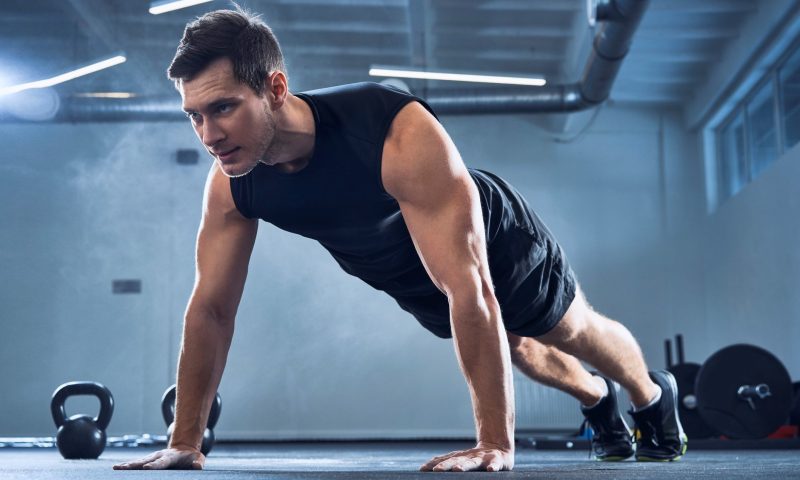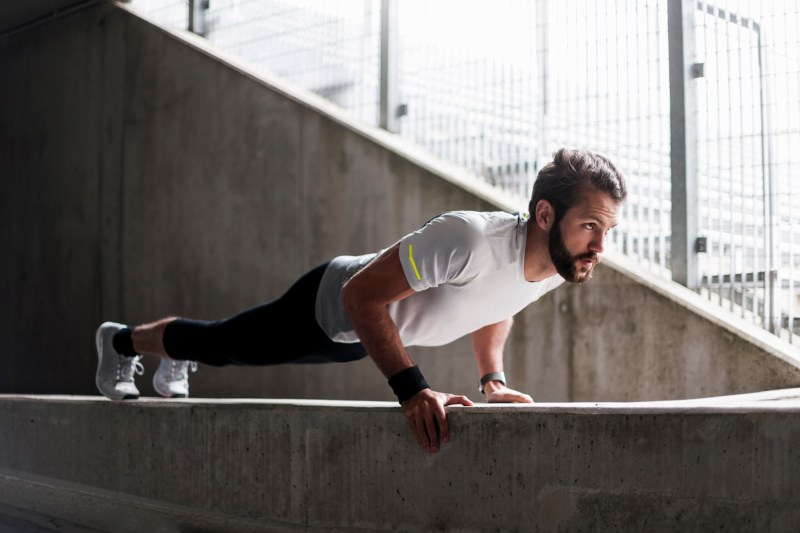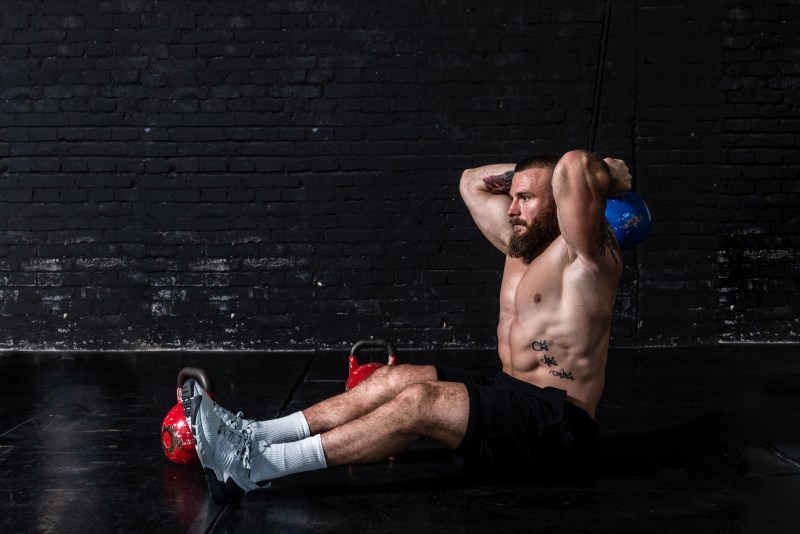
Fitness is one of the most important aspects of a well-balanced wellness lifestyle. With fitness comes exercising and working out, and one of the most rewarding experiences of working out, whether you’re starting out fresh or are a lifelong athlete, is achieving set fitness goals. Some prefer to have access to a home gym, while others prefer their favorite fitness centers with a full range of equipment. No matter how you train, using your own body weight to challenge yourself by completing standard fitness tests is the perfect way to test out your relative strength. One such test is the pushup.
The average middle-aged man should be able to do around 20 pushups. To some, this will be easy, but to others, this may be challenging. But if you’re not at that level, no worries. We’ve compiled a list of tips to help you improve your pushup performance with pushup training workouts. The easiest way is to simply start doing pushups regularly. Over time, this will help you increase your overall number. However, it’s also important to train individual muscle groups involved in performing a pushup. This means hitting the triceps and core is just as important as the chest. Read on to see how you can start to master the pushup and take your max number to the next level.

What are the benefits of pushups?
With pushups being such a simple, fundamental movement, they are a must for your workout routine. If you are consistent with the exercise, you may experience the following benefits:
- Increase in upper body strength
- Improved posture
- Greater ability to carry out functional tasks
- Increased definition in chest and arms
- Supported bone health

What muscles do pushups work?
Pushups work more than your chest and actually engage quite a few muscle groups throughout your body. Here’s a more detailed breakdown:
Primary muscles engaged:
- Pectoralis major: Located in your chest, it’s the main muscle responsible for extending your arms and powering the pushing motion.
- Triceps brachii: Found on the back of your upper arms and plays a crucial role in straightening your elbows and supporting your weight.
- Anterior deltoids: Situated on the front of your shoulders, they help with arm abduction and stabilization during pushups.
Secondary muscles engaged:
- Serratus anterior: Located on the side of your chest, it assists with shoulder movement and stabilization.
- Biceps brachii: While not directly involved in pushing, they help keep your elbows bent and stable during the lowering phase.
- Core muscles: Your abdominal muscles, obliques, and lower back engage to maintain proper posture and prevent your body from sagging during the exercise.
- Quadriceps: Located on the front of your thighs, they help stabilize your legs and keep them engaged during pushups.

Chest focus tips
The chest is the central muscle for the pushup. Therefore, it makes sense that other exercises to strengthen the chest will help your pushup ability. The chest press or bench press is excellent for this. You can do presses with a bar or dumbbells, on a flat bench, or at an incline. For maximum training results, it’s best to alternate how you do this exercise. For example, during workout No.1, do flat barbell bench presses. The next time you hit your chest, do incline dumbbell presses.
A barbell takes less work to stabilize and is, therefore, great for lifting heavier weights. Don’t discount dumbbells, though, even if you can’t lift as much. They recruit stabilizing muscles that help in your pushup journey. Train for strength with this exercise, meaning low reps. Three sets of three to five reps will really build strength. Push the amount of weight you lift progressively, eventually exceeding your body weight. As your chest strength increases, this will translate to more pushups.

Triceps focus tips
Your triceps will also come into play when doing pushups. Strengthen them by doing dips (also great for the chest), cable push-downs, and skull crushers. Keep the reps low, around six to eight, to really strengthen the triceps. Note that when doing pushups, the closer together you place your hands, the more your triceps come into play. The farther apart you place them, the more the exercise targets your chest.

Core focus tips
At the heart of the pushup exercise is a plank. Keeping your body straight and engaging your core while doing push-ups is important. You can do static planks, meaning you keep your arms straight and hold the pose for as long as possible. However, there are a ton of benefits to dynamic planks, meaning you move throughout the motion. Check out the seven-minute dynamic plank workout below.
Practice pushups to get better at them
This seems kind of obvious, but doing more pushups will help you get better at pushups. Here are two ways to do this.
- Move through the motion more slowly. The longer you place your muscles under tension, the harder they have to work. Get in a pushup position and lower yourself to the ground. Focus on slowly lowering yourself, counting to four. Push back up at normal speed and repeat. By spending longer in this position, you engage the muscles for a longer period of time, which will help with how many pushups you can do at a normal speed.
- The other way to train by doing pushups is to do pushups throughout the day. Set yourself a target. Depending on where you are now, maybe 50. Maybe 100. Start out in the morning and do a round of as many pushups as you can. And then, throughout the day, in between Zoom or client meetings, or whenever you take a trip to the kitchen, if working from home remotely, do 10 to 20 more. By consistently hitting 100 a day, your body and muscles will adapt, and you’ll be able to do more pushups in one go.

Practice makes perfect
As you grow stronger and increase your pushup ability, make sure to reward yourself and celebrate the small achievements along your fitness journey. It’s easy to launch into the next goal without properly marking our accomplishments. Celebrating the wins along your wellness lifespan can help you become more consistent.
When you find that you’re routinely able to do pushups until you get bored, it could be time to adapt your chest workout so you don’t plateau. Bookmark these seven pushup exercises for an added challenge to return to when you’re ready. These exercises can also be fun to do alongside the workouts above if you’re looking to push yourself to the limit.



